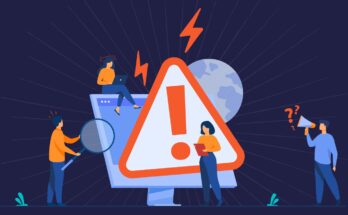The first thing you do after purchasing software as a service product is probably to look for answers online. If your first Google results don’t provide the data you need, you will continue looking. Moreover, there will be more than one search query. People in the market for a SaaS solution are undoubtedly in the research phase of the buying process.
SaaS SEO: What Is It?
Increasing your site’s exposure in SERPs is the primary goal of SEO for a software as a service (SaaS) provider. A website and its content need to be search engine optimized and other traffic-driving strategies implemented if you want to be discovered. Unfortunately, while some businesses succeed magnificently, others fail tragically.
As a SaaS company, you should prioritize gaining these types of visitors by working to improve your site’s search engine results and generating more qualified traffic. But, of course, there’s more to it than just knowing what your demographic requires. The best part about SEO is that it can be tracked through metrics.
Now let’s take a look at some concrete, usable advice for boosting your B2B SaaS company’s search engine ranks and visitor numbers:
Tip 1: Analyze Competitor Sites
Examining the sites of your immediate competitors is the first order of business. Pay close attention to what the competition offers, especially if you want to develop a product like a customer relationship management software for advertising agencies. Have they surpassed your traffic levels? Why? Create a list of everything you see on competing sites that you like more and try to implement it.
Check the sites that are getting this keyword’s organic search traffic once in a while (e.g., CRM software). See where they stand in the search engine results by visiting their respective pages. If your site’s rating is not rising or looks stuck, you might try increasing its popularity by employing several link-building techniques.
You should also investigate their content strategy and methods to acquire links organically. Next, we’ll go through several link-building tactics.
Tip 2: Prioritize Quality and Accuracy
Create better content if you want higher search engine rankings. Users should be able to identify and resolve issues quickly. The most effective strategy is combining information from user reviews with keyword research to produce original and valuable material for the target audience.
Link to relevant content inside the body of the post wherever possible; doing so will increase your site’s rating and keep readers engaged for longer, increasing the possibility of a sale being made.
Most website owners make a mistake of putting all their attention on Google Analytics and ignoring Google Webmaster Tools. If you’re an SEO-aware business, you should monitor the search terms customers use to find your site (from all sources, not just Google). In addition, GWT will show you how search engines interpret your website’s content.
Tip 3: You should prioritize your link-building strategy
Users will have an easier time navigating your site and get more clicks for targeted keywords if you use internal links. Creating a page that details all of your company’s available services are a simple way to accomplish this. Building links into the body of the material is a bit more challenging but can yield significant SEO benefits.
Instead of utilizing deceptive “black hat” SEO techniques, natural link-building procedures are the most efficient method. This wonders for the site’s reputation in the eyes of search engines. The quality backlinks you receive will also assist your brand’s reputation.
Tip 4: Ensure Fast Load Times
Your clickthrough rate (CTR) will increase if your website loads quickly. Most users will go elsewhere if it takes too long for a page on your website to load. Google considers page load time to be an important ranking signal. That’s why increasing your site’s speed has a long-term positive effect on your search engine results.
Most browsers will display a loading icon until the webpage finishes loading or gray out the text. So that people stay on your page and return, you might attract their interest with other information or CTAs.
Tip 5: Enhance your social media advertising
Maintaining active social media profiles well-populated with information about your products and services is essential. It is also vital that your social media profiles be easily accessible. Don’t use your accounts to flood other people’s feeds or share everything that gets posted to your feeds.
Since SEO is getting increasingly competitive, it is essential that you adopt all of your rivals’ methods and then improve upon them. Review their postings and the demographics of their readership as a starting point. Verify that you are following people who share your interests.
Send online push notifications to your prospects anytime you publish a new post using a push notification platform.
Tip 6: Encourage User Engagement
Promoting user participation from the outset is essential for search engine optimization. Putting buttons to share content on social media where users can readily access it is an excellent strategy. If you have a large number of regular followers, this will increase traffic from social media.
Use less intrusive methods to get user input and opinions rather than unpleasant pop-ups. For example, content that invites comments or social sharing from readers is one way to boost engagement with your brand among potential customers.
Creating content that speaks to the visitors’ feelings is the most effective technique to get them involved. If you want to increase your clickthrough rate and the number of social media shares, you should use photos and videos as much as possible.
Tip 7: Make it mobile-friendly
Most up-to-date websites are generally mobile-friendly, but you may improve your search engine rankings by taking a few extra steps. This is because search engines like Google take time to crawl and index fresh content. When optimizing for clickthrough rate (CTR), remember that page speed is a crucial factor in how well your site performs in mobile search engine rankings.
To get started, pick a theme that works well on all devices and screen sizes. After that, check if your site is mobile-friendly using Google’s Mobile-friendly Test tool. If they aren’t, figure out what’s causing the problem and repair it immediately.
Tip 8: Use Schema Markup
Schema markup is a major Google search ranking component, especially for locally focused businesses. In the short run, you should expect increased CTRs because schema markup provides search engines with more information about your site and its content.
Schema markup requires the development of specialized tags with data attributes. For this, you can utilize the Google Structured Data Markup Helper. After you’ve made your tags, you should check them out on Google before putting them to use.
Tip 9: Make sure you’re consistently producing fresh content
It’s not enough to have excellent material to share. Keep in mind that search engines constantly scan the web for fresh content, so it’s essential to update it frequently. You must consistently provide new material if you want higher search engine rankings.
Your site’s CTR and rankings may benefit if users are kept interested and frequently return in the long run. Content that will be outdated in weeks or months should also be avoided.
Tip 10: Perform a Technical SEO Audit
Better search engine rankings don’t necessitate a flawless website. Nonetheless, it would be best if you did a technical SEO audit to determine the strengths and weaknesses of your site. In this approach, you may pinpoint the most pressing issues and take corrective action without delay. Screaming Frog is a helpful tool for performing such a sitewide scan.
Check each page’s HTML code for easily solvable issues. A site that isn’t optimized will struggle to rank well in search engines over time, so work on your SEO immediately.
Final Words
The online presence of a SaaS business is crucial to its ability to attract new customers and earn money. You can’t risk losing traffic due to ineffective SEO strategies. Instead, apply the guidelines mentioned above if your site is underperforming. Instead of losing customers in the future, getting started on these methods is preferable.
Guest Post Service By www.guestarticlehouse.com




